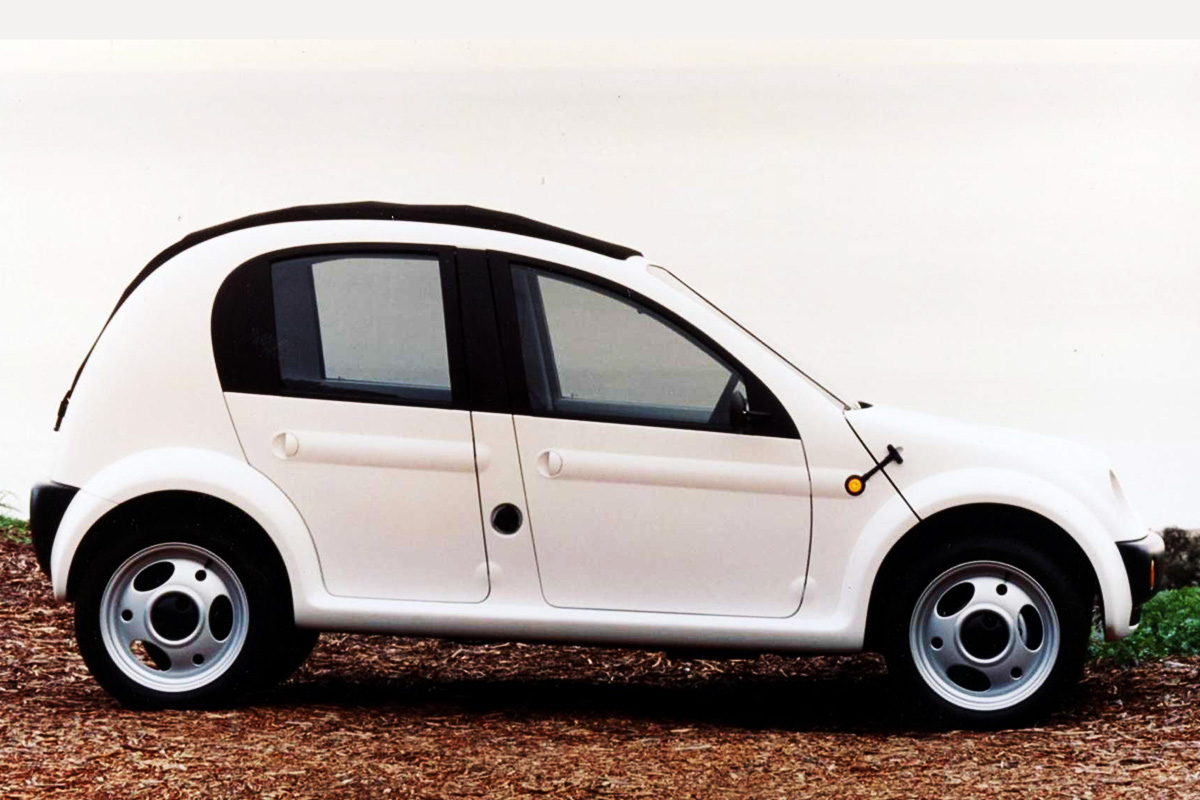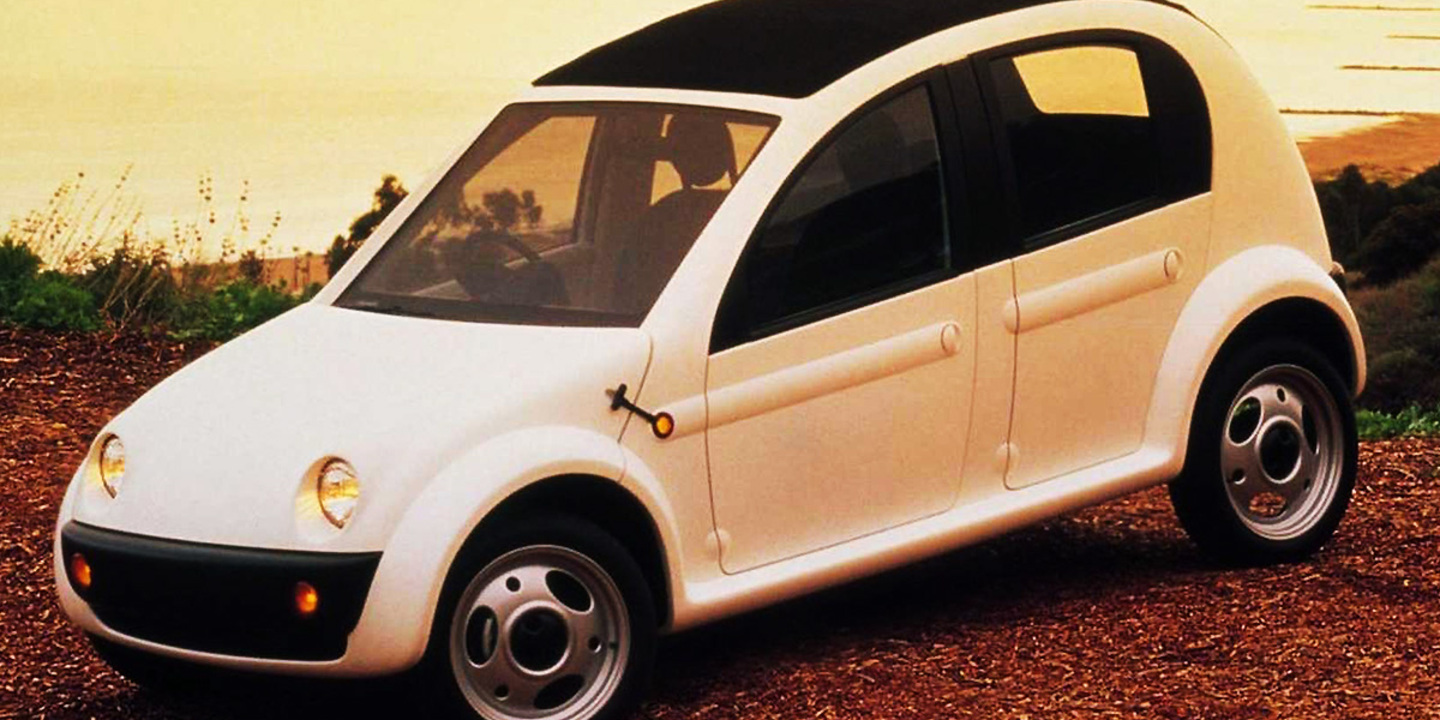During the development of the Chrysler CCV, the American manufacturer was interested in the Citroën 2CV. We’re not just talking about the convex body design with its round headlights and canvas convertible roof, but also the surprisingly large suspension travel. This concept car, presented in 1997 at the IAA in Frankfurt, was intended as an economic model for the Third World. And there the roads are not as good as in the United States.
Originally, the abbreviation CCV, which nods to the 2CV, stood for China Concept Vehicle. But Chrysler soon changed that somewhat derogatory name to Compostie Concept Vehicle. And rightly so, because the composite materials from which the body was made, taken from PET bottles, reduced the total mass of the vehicle to an almost ridiculous 544 kg.
PT Cruiser
The Chrysler CCV was equipped with a small 0.8 liter gasoline engine. The air-cooled twin-cylinder engine developed a mere 25 hp for a maximum torque of only 49 Nm. The top speed was 113 km/h and the sprint from 0 to 100 km/h took 23.6 seconds.
The lines of the CCV were drawn by Brian Nesbitt, the man who was also responsible for the design of the Chrysler PT Cruiser. Even more impressive was the lightning-fast production method the Americans had pioneered: the CCV could be built in less than 7 hours, three times faster than was common for a compact car in the late 1990s.
Mercedes, dream breaker
The Chrysler CCV was neither a concept car intended to shine at international motor shows, nor a pure design exercise that wanted to evoke a modern Citroën 2CV. But it was a clever way to offer as much car as possible for as little money as possible, made from recycled materials and intended for parts of the world where transportation is less obvious than in Europe or the United States. United.
In fact, the production had already been given the green light, but the merger with Daimler put an end to the whole project.

–


